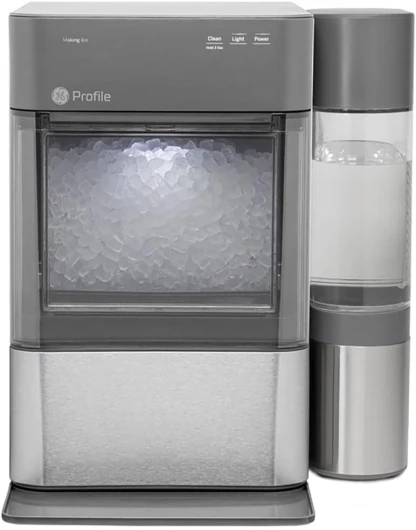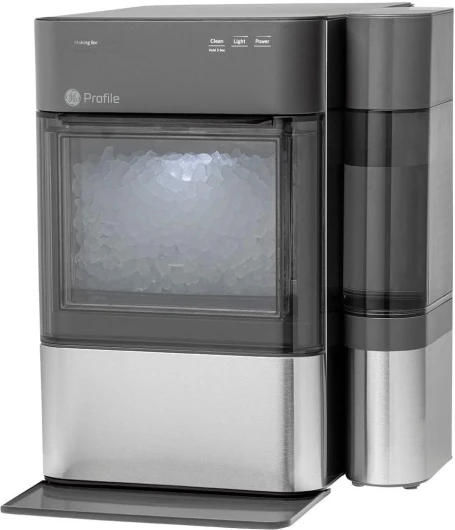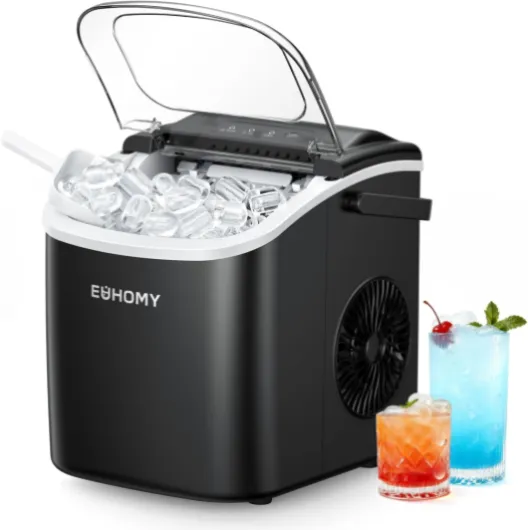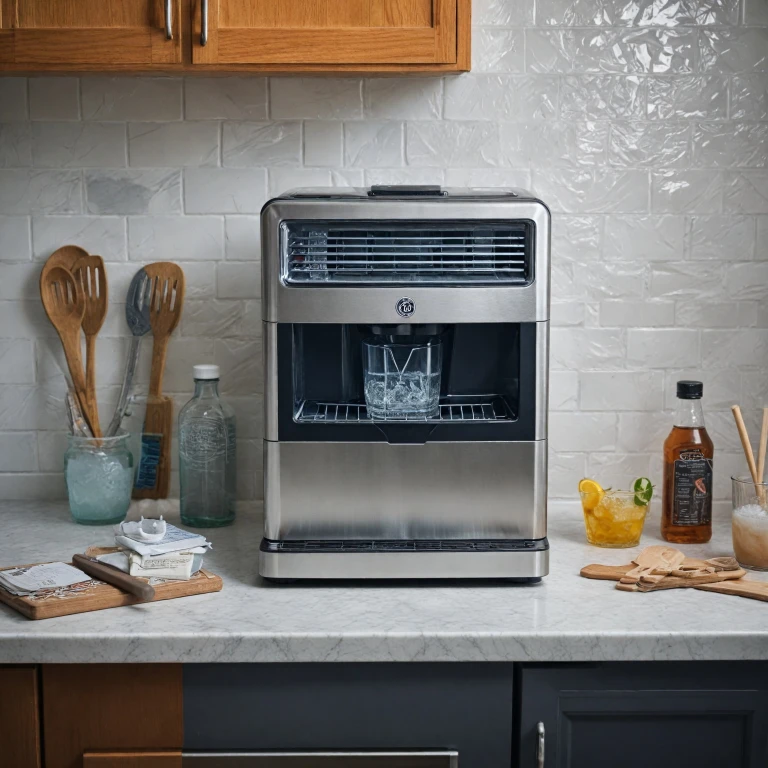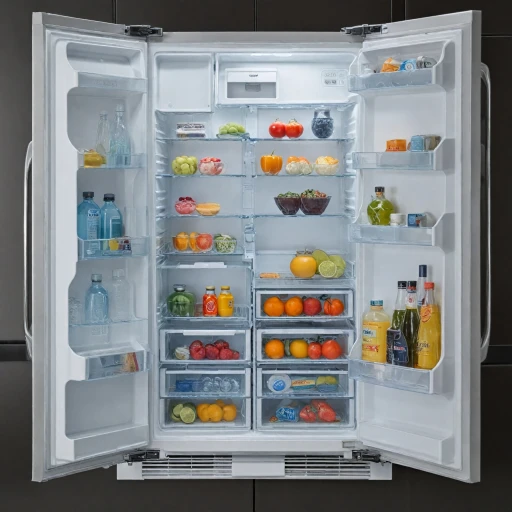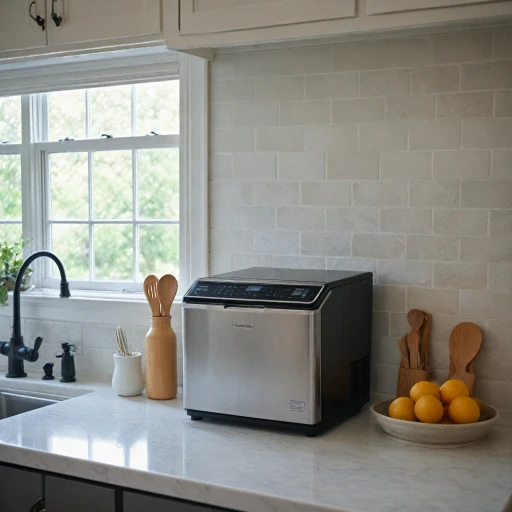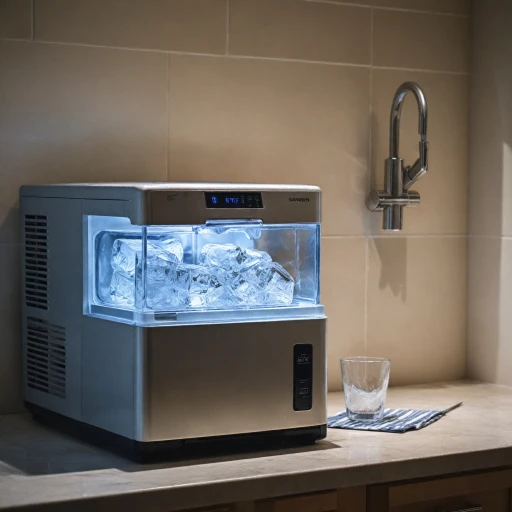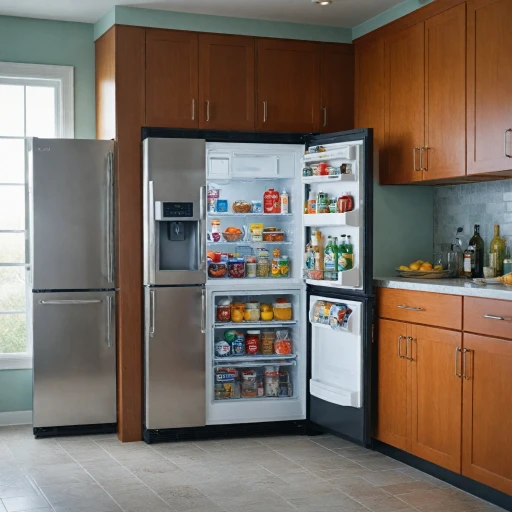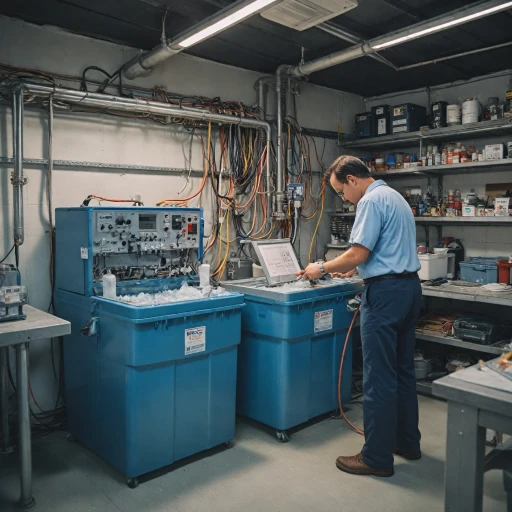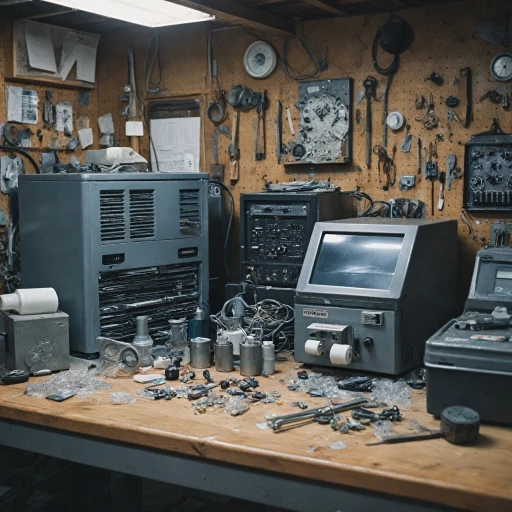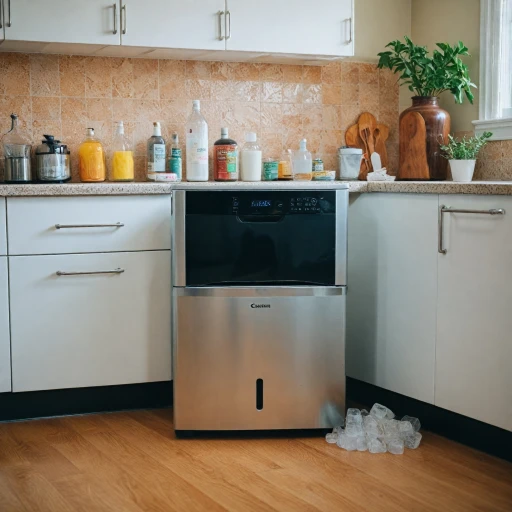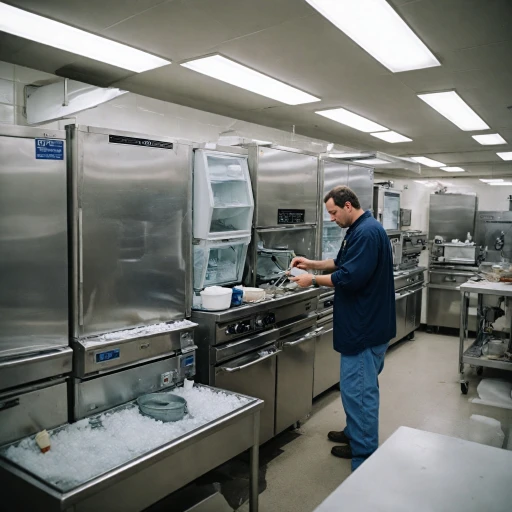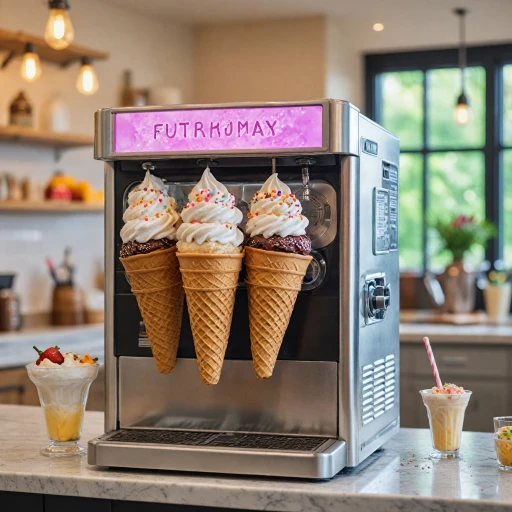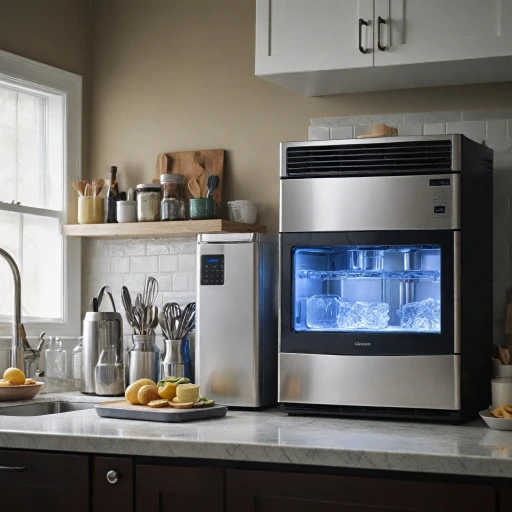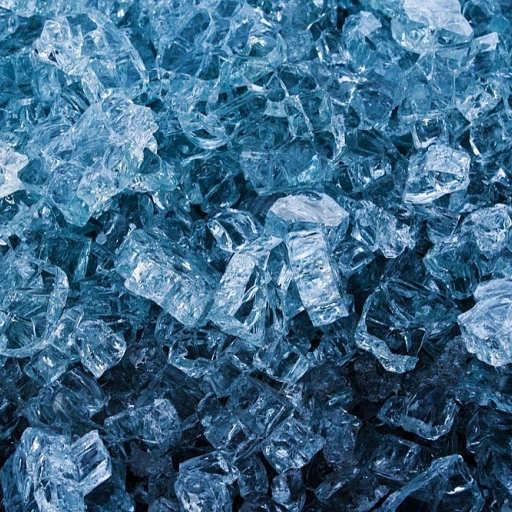
Understanding Common Issues with GE Profile Ice Makers
Identifying Typical Problems with GE Profile Ice Makers
When your GE Profile ice maker isn't producing ice as expected, it's important to understand the common issues that might be at play. By identifying the root of the problem, you can effectively determine the necessary steps to take.- Power Issues: First, ensure that your refrigerator is properly connected to a power source. Check the power cord for any signs of damage and confirm that the outlet is functioning correctly. This step is foundational, as without power, the ice maker cannot operate.
- Water Supply Problems: Consider the water line and valve. If the water supply to the ice maker is restricted or disconnected, your ice maker will not fill with water and, hence, won't produce ice. Inspect the water inlet tube for any kinks or blockages.
- Temperature Regulation: Verify the temperature settings of your refrigerator and freezer. The ice maker requires an optimal freezer temperature to produce ice efficiently. If temperatures are too high, ice production may slow down or stop altogether.
- Control Arm Position: The control arm must be in the correct position to allow the ice maker to function. If mistakenly positioned, it will prevent the ice machine from making ice.
- Filter Issues: Examine the water filter for any clogs or debris buildup, which may hinder water flow. A clogged filter can obstruct water from reaching the ice maker.
Checking the Power Supply and Connections
Power Supply and Connections: Ensuring Proper Functionality
One of the first steps in troubleshooting your GE Profile Ice Maker is to check the power supply and ensure all connections are secure. This is crucial because any interruption can halt ice production entirely.
- Electrical Power: Begin by confirming that your refrigerator is properly plugged into the wall socket. Sometimes a loose plug might be the culprit behind the ice maker not making ice.
- Control Arm Position: Ensure the control arm is not in the raised "off" position. The arm should be down to allow the ice maker to fill the ice tray and resume filling the ice bin with fresh ice cubes.
- Door Security: Make sure the refrigerator door closes fully. If the door doesn't seal tightly, it can cause temperature fluctuations that impact the ice maker's ability to produce ice efficiently. Verify that nothing obstructs the door from closing correctly.
- Circuit Breakers: Check if any circuit breakers relevant to your refrigerator freezer have tripped. Resetting them could restore power to your ice maker.
After confirming the security and functionality of all power-related elements, if your ice maker still faces issues, proceed to inspect the water line and filter further. Understanding each component's role and ensuring they're in working order can significantly affect your ice production quality.
For a good source of parts locally, consider finding the best ice machine parts locally to address any potential repairs required in the process.
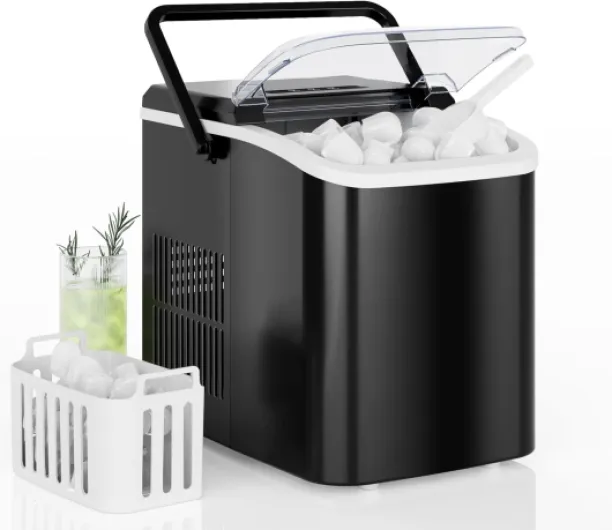
- + Fast Ice Production: 9 bullet ice cubes in just 6 minutes
- + Self-Cleaning Function: Easy maintenance
- + Portable: Ideal for home, kitchen, RV, and camping
- + Compact Design: Saves space on countertop
- + Quiet Operation: Doesn't disturb your environment
Inspecting the Water Line and Filter
Evaluating the Water Line and Filter for Optimal Ice Production
To ensure your GE Profile ice maker is operating at its best, it’s essential to inspect the water line and filter. A common issue affecting ice production can stem from these components, disrupting the steady flow of water needed to form ice cubes. Let’s dive into the steps to check these critical areas.- Water Supply Line: Start by examining the water supply line. Check for any kinks or bends in the tube that may restrict water flow. A blocked or pinched line will limit the water reaching the refrigerator ice maker, leading to reduced or no ice production.
- Water Inlet Valve: Locate and assess the water inlet valve, typically found at the back of the refrigerator freezer. This valve controls the water flow into the ice maker. Ensure it’s fully open and functional; if you notice any problems, it might require repair or replacement.
- Water Filter: Over time, water filters can become clogged with impurities, affecting water quality and flow. If there's a sudden reduction in ice cubes, check if the filter needs replacing. Most manufacturers recommend changing it every six months for efficient operation.
- Temperature Settings: Verify that the freezer temperature is set correctly. If the temperature is too high, it may prevent water from freezing promptly, thereby reducing ice output. Aim to maintain it between 0 to 5 degrees Fahrenheit for optimal results.
- Ice Maker Control Arm: If the control arm is in the raised position, it signals the machine to stop producing ice. Ensure the arm is lowered to continue ice making.
Diagnosing Internal Component Failures
Identifying Internal Malfunctions in the Ice Maker
When facing issues with your GE Profile ice maker, it's crucial to consider potential internal component failures. These situations can lead to a range of problems that directly affect ice production. Let’s delve into the possible internal culprits.
Firstly, ensure the control arm of your ice maker is in the correct position. The arm should move freely; if it’s stuck or not positioned properly, it can hinder ice production, preventing the ice bin from filling. Examine the arm for any obstructions and ensure it is not in the off position.
Another common issue could be with the water inlet valve. This valve regulates water flow into the ice maker. If faulty, it won’t open to allow water to fill the ice tray, halting ice production. To check this, look for any leaks, blockages, or any damage that might require a repair.
The ice maker’s motor and gears could also be a source of trouble. If the unit isn’t making ice even though the temperature is set correctly within the refrigerator freezer, there may be a mechanical issue preventing the motor from cycling and moving ice into the bin.
To diagnose such internal issues, conducting a temperature and sensor check is beneficial. The ice maker operates best within a specific range; if the temperature is too warm or the sensor is malfunctioning, ice production may stop. Ensure the refrigerator is set to the correct temperature, and the ice maker sensor isn’t covered or impaired.
If these components are unfamiliar, or a more complex problem persists despite checking these factors, scheduling service with a professional technician may be necessary to avoid further issues. Remember to always turn off the power to your refrigerator before attempting any DIY repairs to ensure safety.
Performing a Reset on Your GE Profile Ice Maker
Initiating a Proper Reset of Your Ice Maker
Finding that your GE Profile ice maker isn’t producing ice can be frustrating, but performing a reset might just be the simple solution you need. Resetting your ice maker can help resolve minor issues, especially after inspecting your water line, power connections, and internal components. To initiate a reset:- Power Off: Begin by turning off the refrigerator to ensure safety. Unplug it from the power supply or switch off the circuit breaker if necessary.
- Control Arm Position: Locate the control arm of the ice maker. This arm stops and starts ice production. Ensure it’s in the 'on' position, or gently adjust it to reset its position. This can prompt the ice maker to start a fresh ice cycle.
- Inspect the Ice Bin: Sometimes the ice bin gets overfilled, causing the control arm to halt ice production. Empty part of the ice bin to allow the control arm to move freely.
- Inspect the Water Inlet Valve: Check and ensure the water inlet valve is functioning correctly. A blocked or faulty valve may obstruct water flow to the ice tray. Make sure it's not clogged.
- Freezer Temperature: Confirm that your freezer compartment is set to the appropriate temperature. If it's too warm, it won’t allow for proper ice forming.
When to Call a Professional Technician
Identifying the Need for Professional Assistance
After attempting the previous steps, if your GE Profile Ice Maker is still not producing ice, it could be time to consider calling in a professional technician. Here’s when it’s advisable to seek expert help:
- Persistent Power Supply Problems: If the ice maker's power supply issues persist despite checking connections and ensuring the refrigerator freezer is powered, a deeper electrical problem may exist.
- Continuous Water Flow Problems: If water supply issues continue, such as inadequate water flow or unexpected leaks around the water fill valve and tubes, these could signal more significant plumbing or component failures.
- Temperature Regulation Concerns: When irregularities in maintaining the freezer’s appropriate temperature affect ice production, professionals can determine if there's an issue with the internal temperature sensors or thermostats.
- Complex Internal Component Failures: If temperature, control arm, or motor failures prevent the ice maker from operating correctly, trained professionals have the tools and expertise to diagnose and fix these problems accurately.
- Persistent Filter and Water Line Clogs: Even after replacing the water filter and cleaning the water line, continuous blockages that halt ice making could require professional cleaning and repair.
At times, internal repairs may help resolve the issues, but recurring severe problems might mean replacing the entire ice maker. It's crucial to document any troubleshooting steps taken and schedule service at a convenient time to get your ice maker back to optimal performance.
-logo-retina.jpg)
